Best Christmas Tree for Allergies: 3 Types for You
As a participant in the Amazon Services LLC Associates Program and other affiliate programs, Easy Homemade Life may collect a share of sales or other compensation from the links on this page. This comes at no additional cost to you, and all the prices and availability are accurate at the time of publishing.
To make sure your holiday season is filled with cheers and not achoos, I’ll share some of the best Christmas trees for allergies you can get your hands on, as well as some tips to keep your Christmas allergy-free.
For many of us, there’s nothing like the joy of decorating a Christmas tree to kickstart the holiday season. But when you keep sneezing and sniffing due to allergies, decorating becomes more of a chore than a cherished tradition.
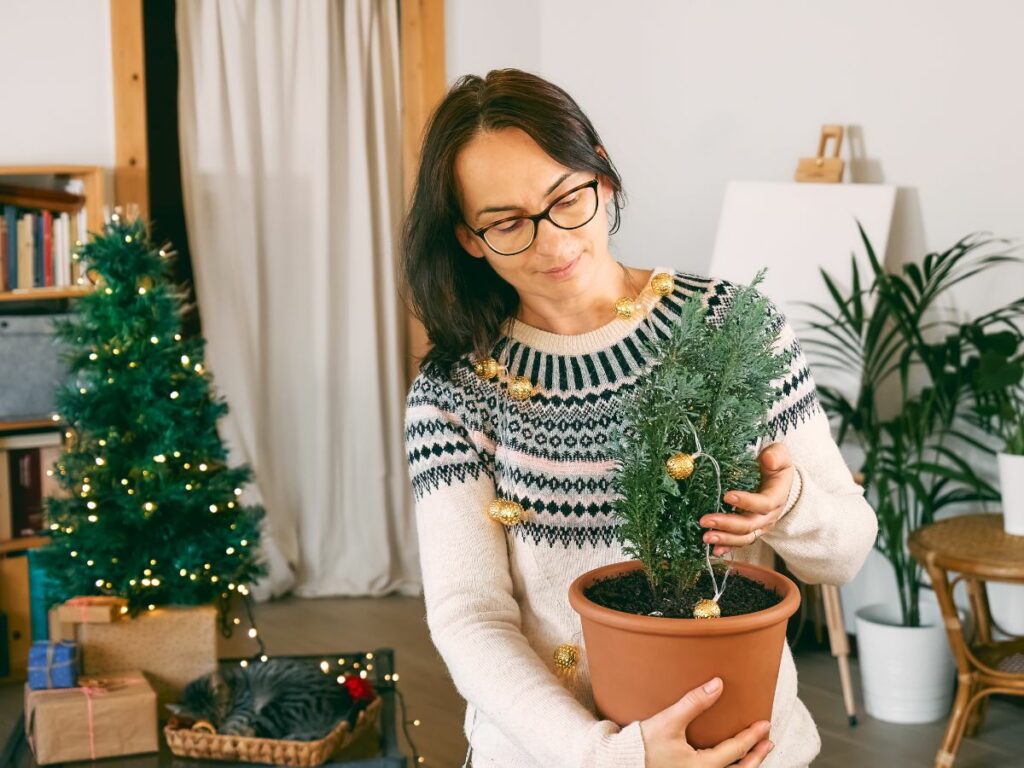
3 Best Christmas Trees for Allergies
Just because you’re allergic to Christmas trees doesn’t mean you should ban Christmas trees entirely. In fact, quite a few trees are considered sterile or non-allergenic and could pass as Christmas trees.
Leyland Cypress
Leyland Cypress is a cross between the Monterey Cypress and the Alaskan Cedar. It’s an excellent alternative to traditional Christmas trees not only because of its classic Christmas tree shape and mild scent, but also because it produces very little, if any, pollen. It has soft, feathery needles that are less likely to cause skin irritations when touched.
Leyland Cypress isn’t typically available at your local tree lot or big box store, so you’ll have to make a few calls to purchase it from specialized farms. I always found the extra effort worth it because Leyland Cypress is much easier to care for than traditional Christmas trees, requiring less water and dropping fewer needles. With it, you can maintain your room’s festive appearance through the holiday season and enjoy this time of year without much fuss.
Concolor Fir
Famous for its citrusy fragrance, Concolor Fir is known to be more allergy-friendly than other firs. It only ever pollinates in Spring, unlike other evergreen trees that release pollen throughout the year.
It’s likewise less resinous than some other types of firs, such as Fraser or Balsam Firs. This means they’re less likely to produce sticky tree sap that can cause skin irritation and allergies. The fact that a Confolor Fir has fewer allergic components like terpenes is a huge plus. Its milder woodsy aroma makes it the best choice for those with Christmas tree allergies.
Artificial Trees
Artificial Christmas trees don’t deserve the hate they get. They may not be as traditionally festive as real, fragrant evergreens, but they offer several advantages that make them a practical choice for people with tree-related allergies. Plus they will look just as great when you host a holiday party.
Artificial variants don’t produce pollen or sap, so they can be decorated and moved however many times you like without triggering your Christmas tree allergies. They also come in various sizes, colors, and styles, allowing you to customize this type of tree while maintaining a hypoallergenic environment.
With that said, the fake trees aren’t immune to mold, dust, pine pollen and other potential allergens. These allergens accumulate over time while they’re tucked away in storage during the rest of the year. That’s just one reason proper Christmas organization needs to get dialed in.
To avoid problems, unpack the artificial tree outside and give it a thorough wipe-down with anti-bacterial wipes. If the tree isn’t pre-lit, you can vacuum it or spray it with water using a hose. These measures ensure the tree is a clean and allergy-friendly addition to your holiday decor.
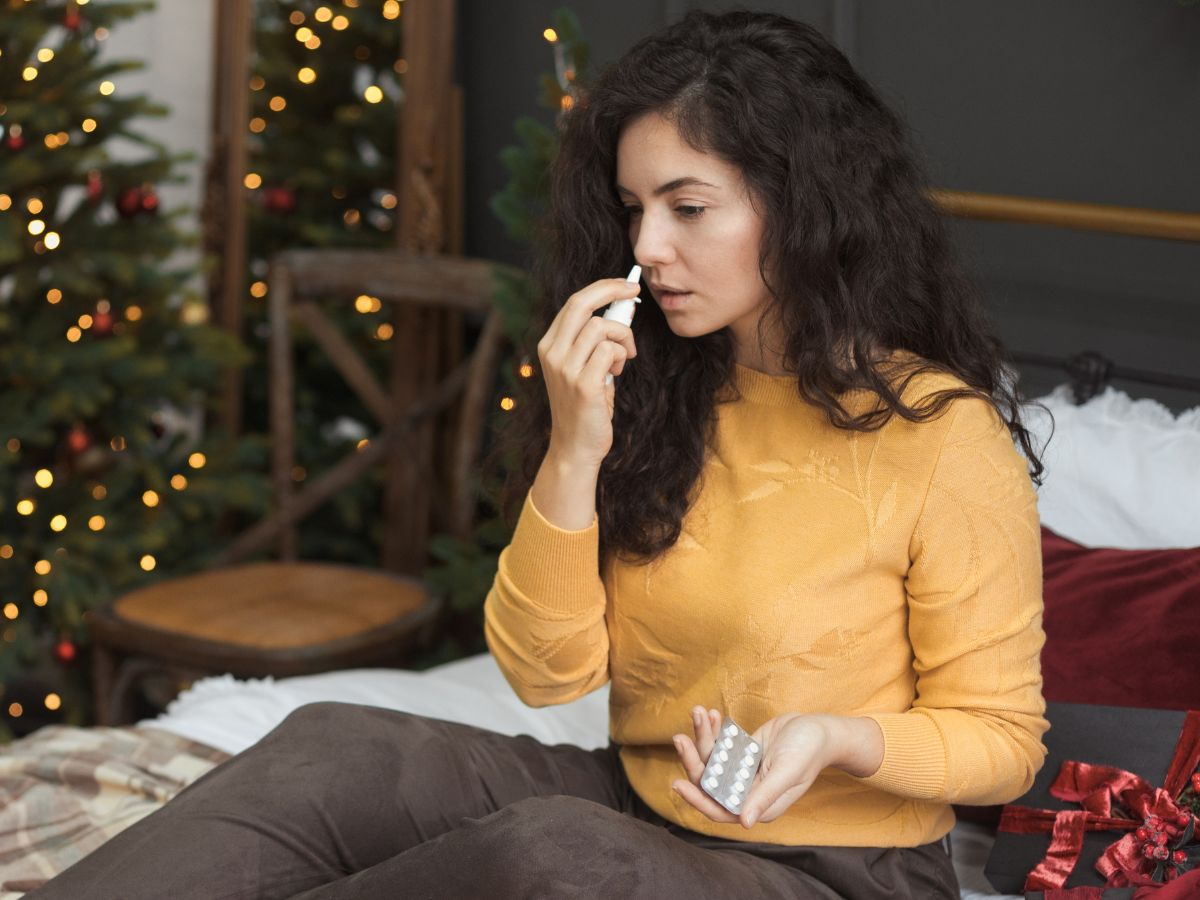
How Do Christmas Trees Trigger Allergy Symptoms?
For allergy sufferers, experiencing Christmas tree allergy symptoms for the first time can be surprising. Discover why, for many, the Christmas tree is both the best part and a potential trigger for allergies. Christmas trees trigger allergy symptoms for a variety of reasons, including:
Dust Mites
Christmas trees, with their various nooks and crannies, are a magnet for dust and dirt. Without regular upkeep, these festive centerpieces can turn into a perfect breeding ground for dust mites. Dust mites thrive in dusty environments. Many find their way into the tree and become airborne when disturbed during decorating or placement.
Airborne particulates can cause allergy-prone individuals to experience symptoms like sneezing, coughing, a runny or stuffy nose, and breathing difficulties. Sometimes, what you think is seasonal flu is actually an allergy.
Mold
Microscopic mold spores grow naturally on branches, needles, and bark of pine and fir trees. Outdoors, these molds are harmless. But when the real Christmas trees are cut and brought inside the home, the indoor environment provides conditions that may further exacerbate their growth and trigger mold allergies.
Researchers at SUNY Upstate Medical University found that pine trees can carry not one, not two, but 53 different types of mold. That’s an awful number of mold spores, especially when you consider the rate of mold growth as these species duplicate by the thousands.
As mold spores multiply, they become airborne when disturbed. This is often the case when you’re moving, decorating, or simply walking past the live tree. Exposure to mold spores can lead to allergy symptoms that include runny nose, and watery eyes.
Terpenes
Terpenes is a naturally occurring chemical compound that gives a live Christmas tree its characteristic pine scent. While it makes rooms smell festive during the holidays, the bad news is that these chemicals can cause irritation and allergies in some people.
Allergies caused by terpenes are far less common than other tree-related allergies like pollen and mold, but they aren’t as rare as you might think. They also manifest as more severe symptoms, like wheezing, skin rashes, shortness of breath, and in rare cases, even anaphylaxis.
Pollen
Most trees release pollen, and Christmas trees—pine, spruce, and fir—are no exception. Certain tree species release small amounts of pollen, especially when they’re brought indoors. Like mold, pollen can become airborne and trigger allergic reactions in people who are sensitive to tree pollen.

How to Keep Your Christmas Allergy-Free
Don’t let your allergies put a damper on your Christmas spirit. Keeping your Christmas allergy-free is a simple task of making a better choice in holiday preparations. Learning how to prevent hay fever symptoms and avoid respiratory issues during this festive season is easy.
Here are some effective strategies to ensure that celebrating the holidays remains a joyful and health-conscious experience. Use my tips to ensure a festive and allergy-free holiday:
- Select ornaments and Christmas decorations that are easy to clean and less likely to collect dust. Avoid wood or resin-covered holiday decorations and instead opt for smooth and wipable surfaces like plastic or glass.
- If you’re using a real tree, take it outside, give it a good shake and spray it with a garden hose to remove excess pollen, different kinds of mold and dead needles.
- Dust and vacuum regularly to keep your home clean and dust-free.
- Use air purifiers with HEPA filters to remove allergens from the air and improve the air quality. HEPA filters remove up to 99.97% of dust, bacteria, and airborne particles, making them a valuable addition to your home during and outside the festive season.
- Choose fragrance-free or hypoallergenic air fresheners and natural candles.
Wrapping Up
I hope this post on the best Christmas trees for allergies gave you an idea of what trees to use during the upcoming holiday season. Instead of getting traditional Christmas tree species, like Douglas Fir or Norway Spruce, opt for the type of Christmas tree species that will not cause allergy triggers like Concolor Fir and Leyland Cypress. This simple choice can help avoid the Christmas tree syndrome.
Opting for artificial Christmas trees is another good option for allergy sufferers. Ensure you pick the best artificial Christmas trees and make cleaning a priority before serving a holiday charcuterie board while decorating in your living room. Adding a simple tree skirt can be a stylish way to keep dust at bay and enjoy the beauty of your own Christmas trees without worry.

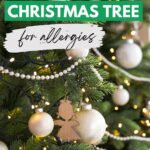


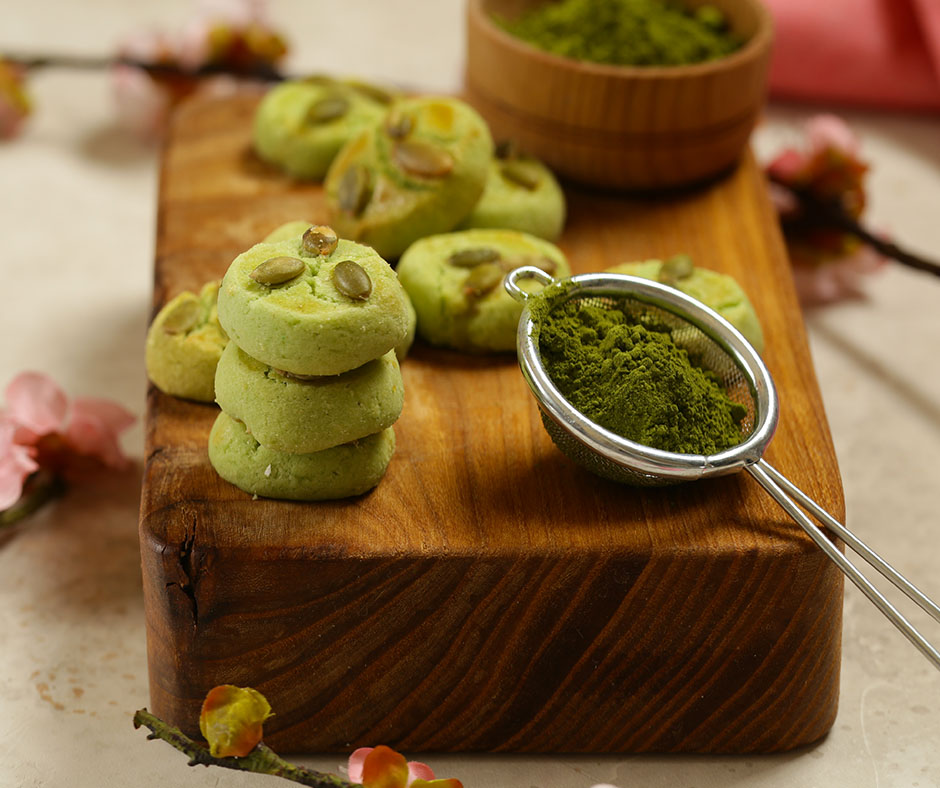


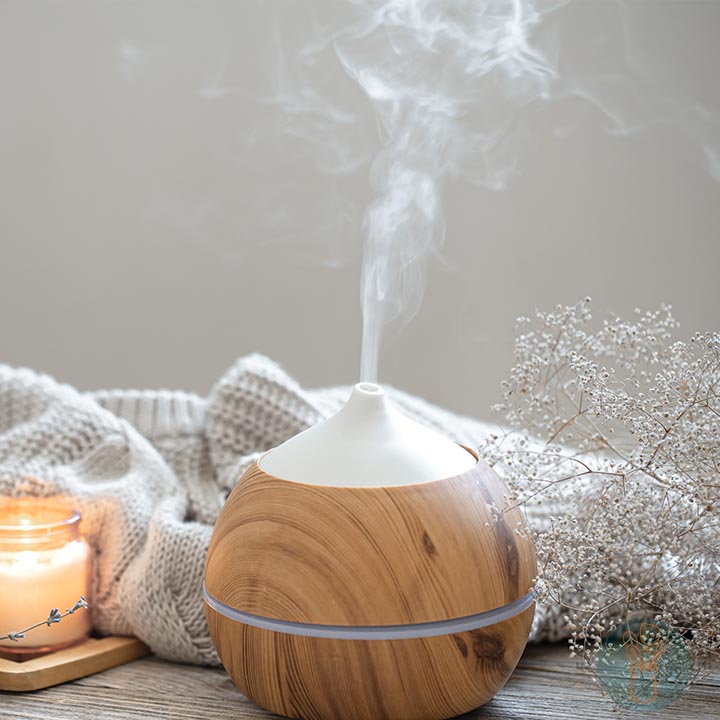
That terpenes part was very interesting, and I was able to select a tree that will hopefully be less difficult for my family’s allergy issues this year. Thanks!
Glad you found it informational!
We will be spraying down our tree with a hose this year to see if it helps with the sneezing and sniffling. Thanks for the tips!
You are welcome, Nell. Hope they help!